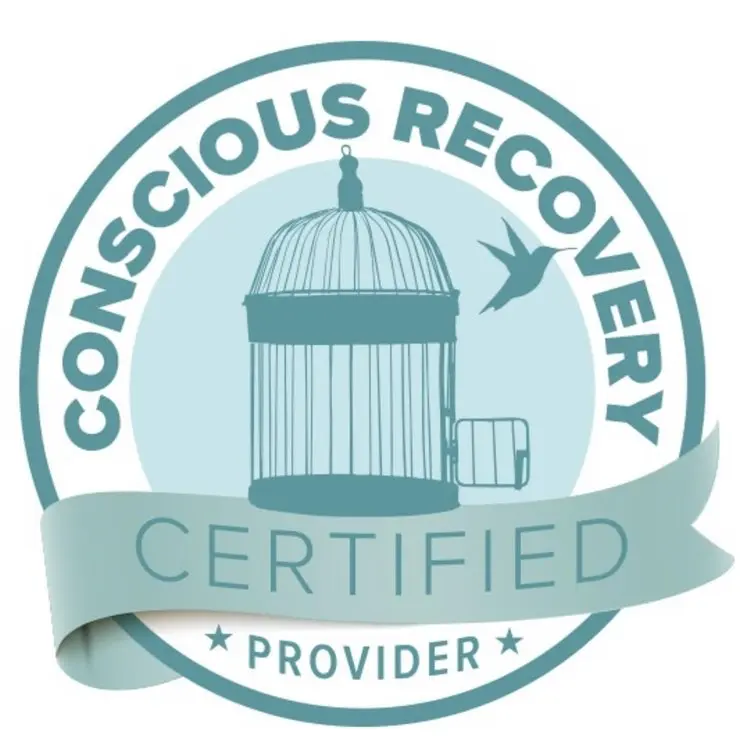For many people, the idea of vulnerability in relationships feels uncomfortable, even threatening. If you find yourself pulling away when partners get too close, struggling to express emotions, or feeling suffocated by others’ needs for intimacy, you may have developed an avoidant attachment style. While this pattern once served as protection, it can create barriers to the deep, meaningful connections you deserve.
Understanding and healing avoidant attachment is possible. With the right approach and support, you can learn to embrace intimacy without losing your sense of self, creating the secure relationships that lead to lasting fulfillment.
Understanding Avoidant Attachment
Avoidant attachment is one of several attachment styles that develop early in life based on our relationships with primary caregivers. Unlike anxious attachment, which creates a desperate need for closeness, avoidant attachment leads to discomfort with intimacy and a strong desire for independence and self-reliance.
People with avoidant attachment often learned early in life that emotional needs weren’t consistently met, or that expressing vulnerability led to rejection or disappointment. As a result, they developed strategies to protect themselves by maintaining emotional distance and avoiding dependence on others.
Common Characteristics of Avoidant Attachment
If you have an avoidant attachment style, you might recognize these patterns:
- Discomfort with emotional intimacy: Feeling overwhelmed or trapped when partners seek closeness
- Difficulty expressing emotions: Struggling to identify or communicate your feelings
- Strong need for independence: Prioritizing autonomy and self-sufficiency above connection
- Minimizing the importance of relationships: Downplaying your need for others or dismissing relationship concerns
- Fear of engulfment: Worrying that intimacy will lead to losing your identity or freedom
- Difficulty trusting others: Believing that people will ultimately disappoint or abandon you
- Emotional numbing: Shutting down feelings to avoid vulnerability
- Partner deactivation: Focusing on your partner’s flaws to maintain emotional distance
These patterns often develop as adaptive responses to early experiences but can create significant challenges in adult relationships.
The Origins of Avoidant Attachment

Understanding where avoidant attachment comes from is crucial for healing. These patterns typically develop in response to specific childhood experiences that taught you that emotional expression was unsafe or unwelcome.
Early Childhood Experiences That Foster Avoidant Attachment
Avoidant attachment often develops when children experience:
- Emotionally unavailable caregivers: Parents who were physically present but emotionally distant or unresponsive
- Rejection of emotional expression: Being told to “toughen up,” stop crying, or that emotions were weakness
- Inconsistent caregiving: Parents who alternated between being nurturing and rejecting, creating confusion about emotional safety
- Overly critical or demanding parents: Caregivers who emphasized achievement over emotional connection
- Early independence demands: Being expected to be self-sufficient from a young age
- Trauma or neglect: Experiencing abuse, neglect, or other traumatic events that made vulnerability feel dangerous
These experiences teach children that emotional needs are burdensome, that others can’t be relied upon, and that safety comes through self-reliance rather than connection.
The Neuroscience Behind Avoidant Attachment
Research shows that early attachment experiences shape brain development, particularly in areas responsible for emotional regulation and social connection. In avoidant attachment, the brain often develops enhanced prefrontal cortex activity (supporting self-control and independence) while showing reduced activity in areas associated with emotional processing and empathy.
This neurological wiring explains why intimacy can feel genuinely threatening to someone with avoidant attachment—their brain is wired to perceive emotional closeness as a potential danger. However, thanks to neuroplasticity, these patterns can be rewired through consistent therapeutic work and new relationship experiences.
How Avoidant Attachment Affects Your Relationships
Avoidant attachment doesn’t just influence romantic relationships—it impacts how you connect with friends, family, colleagues, and even your relationship with yourself.
Romantic Relationships
In romantic partnerships, avoidant attachment can create predictable but painful cycles:
- Initial attraction to independence: Often drawn to partners who seem equally independent or emotionally unavailable
- Phantom ex syndrome: Idealizing past relationships or unavailable partners while devaluing current ones
- Deactivating strategies: When intimacy increases, unconsciously finding reasons to create distance
- Fear of commitment: Avoiding labels, future planning, or deeper levels of partnership
- Emotional shutdown: Withdrawing when partners express needs for closeness or emotional support
- Push-pull dynamics: Alternating between wanting connection and pushing partners away
These patterns often leave partners feeling confused, rejected, and emotionally starved, while the avoidant individual feels simultaneously lonely and trapped.
Other Relationships
Avoidant attachment also affects other important relationships:
Friendships: May have many acquaintances but few deep friendships; difficulty maintaining long-term connections; tendency to compartmentalize different friends rather than building integrated social circles.
Professional relationships: Often excel at task-focused work but struggle with team collaboration; may avoid feedback or mentoring relationships; difficulty with workplace conflict resolution.
Family relationships: May maintain surface-level contact while avoiding deeper emotional conversations; struggle with family gatherings or emotionally charged situations; difficulty accepting help or support from family members.
Evidence-Based Approaches to Healing Avoidant Attachment

Healing avoidant attachment requires both understanding the patterns and actively working to create new neural pathways for connection. Several therapeutic approaches have proven effective for addressing avoidant attachment styles.
1. Attachment-Based Therapy
Attachment-based therapy focuses specifically on understanding and transforming attachment patterns. This approach helps you explore how early experiences shaped your relationship patterns and provides a safe space to practice new ways of connecting.
At Monima Wellness, our attachment-based therapy program creates a supportive environment where women can explore these deeply ingrained patterns with therapists specially trained in attachment theory. The therapeutic relationship itself becomes a laboratory for practicing secure attachment behaviors.
2. Emotionally Focused Therapy (EFT)
EFT is particularly effective for avoidant attachment because it focuses on identifying and expressing emotions in a safe, structured way. This approach helps you:
- Recognize and name emotions you may have learned to suppress
- Understand the protective function of your avoidant behaviors
- Practice expressing vulnerability in graduated steps
- Develop tolerance for your partner’s emotional needs
3. Cognitive Behavioral Therapy (CBT)
CBT helps identify and challenge the thought patterns that maintain avoidant attachment. For example, beliefs like “I don’t need anyone” or “people always disappoint you” can be examined and gradually shifted toward more balanced perspectives.
Monima’s Cognitive Behavioral Therapy approach helps clients recognize the thinking patterns that keep them isolated and develop more flexible, connection-oriented thoughts.
4. Dialectical Behavior Therapy (DBT)
DBT is particularly valuable for avoidant attachment because it teaches distress tolerance and emotional regulation skills without requiring immediate vulnerability. This approach helps you:
- Build tolerance for uncomfortable emotions without shutting down
- Develop interpersonal effectiveness skills for healthier communication
- Practice mindfulness to increase emotional awareness
- Learn to stay present during difficult relationship moments
Our DBT-trained clinicians at Monima offer Dialectical Behavior Therapy to help women develop practical skills for navigating relationship challenges while maintaining their sense of autonomy.
5. Somatic and Body-Based Approaches
Since avoidant attachment often involves disconnection from bodily sensations and emotions, somatic approaches can be particularly healing. These methods help you:
- Reconnect with your body’s wisdom and emotional signals
- Process stored trauma that may underlie avoidant patterns
- Develop tolerance for physical sensations associated with vulnerability
- Practice grounding techniques for managing relationship anxiety
Monima Wellness incorporates several body-based healing modalities, including trauma-informed yoga, breathwork, and somatic experiencing therapy, which can be particularly effective for reconnecting with suppressed emotions and building tolerance for intimacy.
Self-Guided Practices for Healing Avoidant Attachment
While professional support is often essential for healing avoidant attachment, there are practices you can incorporate into daily life to support your growth:
1. Emotional Awareness Building
Since avoidant attachment often involves emotional suppression, building emotional awareness is crucial:
- Daily emotion check-ins: Set reminders to pause and identify what you’re feeling throughout the day
- Emotion journaling: Write about your emotional experiences without judgment or analysis
- Body awareness practice: Notice physical sensations that accompany different emotions
- Feeling wheel exercises: Use emotion wheels to expand your emotional vocabulary
2. Gradual Vulnerability Practice
Learning to be vulnerable is like building a muscle—it requires gradual, consistent practice:
- Start small: Share minor concerns or preferences with trusted friends
- Practice “I” statements: Express your feelings and needs using personal language
- Ask for small favors: Begin building comfort with interdependence through minor requests
- Share appreciation: Practice expressing gratitude and positive feelings toward others
3. Relationship Skills Development
Building specific relationship skills can help you maintain connections without feeling overwhelmed:
- Active listening practice: Focus on truly hearing others without planning your response
- Boundary setting: Learn to communicate your needs while remaining open to connection
- Conflict resolution skills: Develop tools for addressing disagreements without withdrawing
- Quality time practice: Gradually increase time spent in focused connection with others
4. Self-Compassion Work
Healing avoidant attachment requires developing a kinder relationship with yourself:
- Self-forgiveness practice: Recognize that your avoidant patterns were protective strategies
- Inner child work: Address the wounded parts of yourself that learned to avoid connection
- Mindfulness meditation: Develop present-moment awareness without judgment
- Self-care routines: Build practices that nurture yourself without requiring others
Creating Secure Relationships: Practical Strategies
As you work on healing your attachment style, these strategies can help you build more secure, satisfying relationships:
Communicating Your Needs
Learning to express your needs for both connection and space is essential:
- Be direct about your attachment style: Help partners understand your patterns without using them as excuses
- Request patience: Ask for understanding as you practice new ways of connecting
- Communicate your process: Share when you’re feeling overwhelmed and need space, but also when you’re ready to reconnect
- Express appreciation: Acknowledge when partners give you the space or patience you need
Managing Intimacy Anxiety
When intimacy feels overwhelming, these strategies can help:
- Take breaks: It’s okay to step away and return when you feel more regulated
- Use grounding techniques: Breathe deeply, notice your surroundings, or use physical grounding
- Challenge catastrophic thinking: Question thoughts about losing yourself or being trapped
- Remember your agency: Remind yourself that you can choose how much intimacy to share and when
Choosing Compatible Partners
While working on your attachment style is important, partner choice also matters:
- Secure partners: Those with secure attachment can provide consistency and patience while you heal
- Avoid anxious-avoidant cycles: Partners with anxious attachment may trigger your avoidant responses
- Look for emotional intelligence: Partners who understand attachment and are willing to work on the relationship together
- Value growth mindset: Partners who see relationships as opportunities for mutual growth
Building a Support Network
Expanding your circle of support helps reduce pressure on romantic relationships:
- Cultivate friendships gradually: Build connections at a pace that feels manageable
- Join interest-based groups: Connect with others around shared activities rather than emotional sharing initially
- Consider group therapy: Practice relationship skills in a structured, safe environment
- Maintain family connections: Work on family relationships where healthy and possible
The Unique Journey of Women with Avoidant Attachment
Women with avoidant attachment often face unique challenges due to societal expectations and cultural messaging:
- Conflicting gender expectations: Society expects women to be relationship-focused, creating internal conflict for those with avoidant tendencies
- Misunderstood independence: Strong independence in women may be labeled as “cold” or “difficult”
- Different trauma presentations: Women’s avoidant attachment may stem from different types of early experiences than men’s
- Reproductive and maternal considerations: Avoidant attachment can impact decisions about pregnancy, childbirth, and parenting
At Monima Wellness, our women-centered approach recognizes these unique factors. Our gender-specific environment provides a safe space to explore avoidant attachment patterns without judgment about how women “should” behave in relationships.
When to Seek Professional Help
While self-help strategies are valuable, professional support can significantly accelerate healing, especially if:
- Your avoidant patterns are causing significant relationship problems
- You’ve experienced trauma that contributes to your attachment insecurity
- You’re struggling with depression, anxiety, or other mental health concerns alongside avoidant attachment
- Self-guided efforts haven’t led to meaningful change
- You’re ready to commit to deeper therapeutic work
Types of Professional Support Available
At Monima Wellness, we offer multiple levels of care specifically designed for women seeking to heal attachment patterns:
- Individual Therapy: Provides personalized guidance and a safe space to explore attachment patterns with expert clinicians who understand women’s unique attachment experiences.
- Group Therapy: Offers opportunities to practice relationship skills and receive feedback in a supportive environment with other women working on similar challenges.
- Intensive Outpatient Program (IOP): Provides 9-15 hours of weekly therapeutic engagement, ideal for women who need structured support while maintaining their daily responsibilities.
- Partial Hospitalization Program (PHP): Offers over 30 hours of weekly treatment for women who need comprehensive daily support to address avoidant attachment and related concerns.
Each woman’s journey begins with thorough neuropsychological testing to ensure accurate diagnosis and personalized treatment planning.
The Healing Process: What to Expect
Healing avoidant attachment is a gradual process that unfolds in phases:
Phase 1: Awareness and Understanding
- Recognizing your avoidant patterns and their origins
- Understanding how these patterns have both protected and limited you
- Building emotional awareness and vocabulary
- Developing self-compassion for your adaptive strategies
Phase 2: Skill Building and Practice
- Learning new relationship and communication skills
- Practicing emotional expression in safe environments
- Developing distress tolerance for intimacy and vulnerability
- Building capacity for interdependence while maintaining autonomy
Phase 3: Integration and Growth
- Applying new skills in increasingly challenging relationship situations
- Deepening capacity for intimacy while maintaining healthy boundaries
- Developing secure relationships that honor both connection and individuality
- Creating a life that balances independence with meaningful connection
Begin Your Journey Toward Secure Connection

Healing avoidant attachment is possible, and you don’t have to do it alone. At Monima Wellness, we specialize in helping women transform their relationship patterns through our comprehensive, trauma-informed approach that combines evidence-based therapies with holistic modalities.
Whether you’re ready for our intensive programs or want to start with our attachment style quiz to better understand your patterns, we’re here to support your journey toward deeper, more fulfilling relationships. You can also learn more about how different attachment styles develop to gain a broader understanding of attachment patterns.
Call us at (858) 500-1542 to schedule a consultation and begin transforming your relationships.
Frequently Asked Questions (FAQs)
Can an avoidant attachment be fixed?
Yes, avoidant attachment can absolutely be healed. While these patterns often feel deeply ingrained, research shows that attachment styles can change throughout life through consistent therapeutic work and new relationship experiences. The brain’s neuroplasticity allows for rewiring of attachment patterns, though healing typically requires patience, professional support, and sustained effort.
Can you heal an avoidant attachment on your own?
While self-awareness and personal practices can support healing, professional therapy is typically essential for transforming avoidant attachment patterns. The very nature of avoidant attachment—avoiding emotional vulnerability and connection—makes it challenging to heal in isolation. Working with a skilled therapist provides the safe relationship needed to practice new ways of connecting.
What type of therapy is best for avoidant attachment adults?
Several therapeutic approaches are effective for avoidant attachment, including attachment-based therapy, Emotionally Focused Therapy (EFT), and Dialectical Behavior Therapy. The most effective approach often combines multiple modalities tailored to individual needs. At Monima Wellness, we use an integrated approach that addresses both the emotional and somatic aspects of attachment healing.
References
1. Sagone, E., Commodari, E., Indiana, M. L., & La Rosa, V. L. (2023). Exploring the Association between Attachment Style, Psychological Well-Being, and Relationship Status in Young Adults and Adults-A Cross-Sectional Study. European journal of investigation in health, psychology and education, 13(3), 525–539. https://doi.org/10.3390/ejihpe13030040
2. Bretaña, I., Alonso-Arbiol, I., Recio, P., & Molero, F. (2022). Avoidant attachment, withdrawal-aggression conflict pattern, and relationship satisfaction: A mediational dyadic model. Frontiers in Psychology, 12, 794942. https://doi.org/10.3389/fpsyg.2021.794942
3. Martínez-Martínez, C., Ruiz-Robledillo, N., Moya-Albiol, L., González-Bono, E., & Sariñana-González, P. (2021). Attachment styles and their relationship with cortisol and psychological variables in caregivers of people with dementia. Primary Health Care Research & Development, 23, e3. https://doi.org/10.1080/13642537.2021.2000465
4. Simpson, J. A., & Steven Rholes, W. (2017). Adult Attachment, Stress, and Romantic Relationships. Current opinion in psychology, 13, 19–24. https://doi.org/10.1016/j.copsyc.2016.04.006



